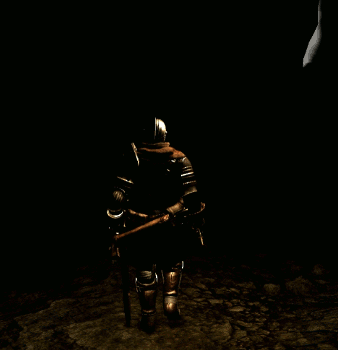When it comes to simulating destruction, video games have more often than not borrowed a page from their table top fore bearers. If you're not sure what I'm getting at here, two words for you - "Hit Points." Honestly, I couldn't find fault with this mechanic back in the 8 and 16-bit eras (or 286/386 for PC users). CPUs back then lacked the capacity to handle anything more complicated than the most rudimentary location damage tracking. As processing power increases though I feel like abstract methods of measuring damage are increasingly obsolete artifacts of simpler times.
As of yet though most games still rely on HP bars and the notion of critical existence failure when it comes to actual gameplay. Granted, driving games have been dabbling with vehicular carnage for quite a while, a practice that has culminated in
BeamNG Drive (and it's soft body physics/collision system). If you really want to see robust damage models though look no further than the simulation genre. Even back in the aforementioned early days of PC gaming there were some impressive attempts at pseudo-realistic damage models. Games like
Mechwarrior and
Wing Commander had rather brutal systems resulting in all sorts of woes including smashed weapons, shattered armor, crippled engines and fried sensors. Despite all the destructible subsystems though these games still had to depend on a finite supply of hit points in order to determine when the death blow was dealt. Additionally, there was very little in the way of external visual feedback aside from a bit of smoke or a trail of sparks. Granted these games came out a long time ago, but it's still surprising just how few games have tried to improve upon existing mechanics.
Simulation titles such as
Navy Field,
World of Warplanes and
Mechwarrior Online are all fairly derivative in terms of damage modeling despite being relatively new releases. However, there are a handful of games that strive to punch through into new territory.
Rise of Flight has some very nice methods of handling structural damage. While high speed crashes perhaps don't look as dramatic as they could, it is cool to see aircraft frames and wing spars warp and break apart when subject to severe punishment. Another good example is
War Thunder. Still far from perfect, it does do a lot to represent the effects of ballistic impacts on a variety of machinery. Every vehicle has a double digit number of location specific subsystems, each with its own unique qualities. I particularly like how they went to great lengths to include forms of damage such as a ruptured fuel tank, oil leak or punctured radiator (the kind of things that don't result in instant destruction, but still need to be dealt with expeditiously). External damage is usually clearly visible as well in the form of rends, holes, flames or in some cases pieces being blown off entirely. Sadly, here's where I talk about some failings of these systems.
Progress has been made but there's still a lot more that can be done. Window screens don't crack or shatter, and aircraft fuselages are visually pretty much indestructible (although they sometimes fall bellow the ground texture giving the impression that the crashing airplane disintegrated on impact). Being able to see bullet impact marks is neat, but despite detailed ballistics tracking the textures don't always correspond to the damage inflicted. Sometimes the transition from undamaged texture to damaged texture is awkward looking as well.

While a bit gory mechanically speaking, I think it would be cool to see "bleeding" coolant, oil, fuel or hydraulic fluid along with white vapors (when appropriate) instead of spewing black smoke exclusively. A common criticism I hear brought up against more detailed damage models is that they require a great deal of computational resources. While I agree that detailed simulations require a lot of calculation, it's exactly the kind of thing modern computers are designed to do (not to mention the ubiquity of multicore CPUs these days).
Graphics are offering diminishing returns, AI is a tough nut to crack and sound in video games is much more of an art than science at this point, but despite all of these potential dead ends there remains a lot of straight forward things that can be done to improve the simulation aspects of games. I keep hearing people online calling for all games to have 1080p and 60fps this console generation, but I'd much rather see more in the way of destructibility whether it be vehicles, buildings or even digital people. Now excuse me while I go watch some old Godzilla flicks.



















